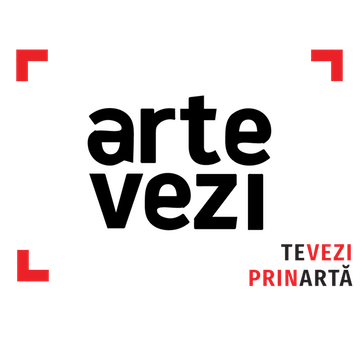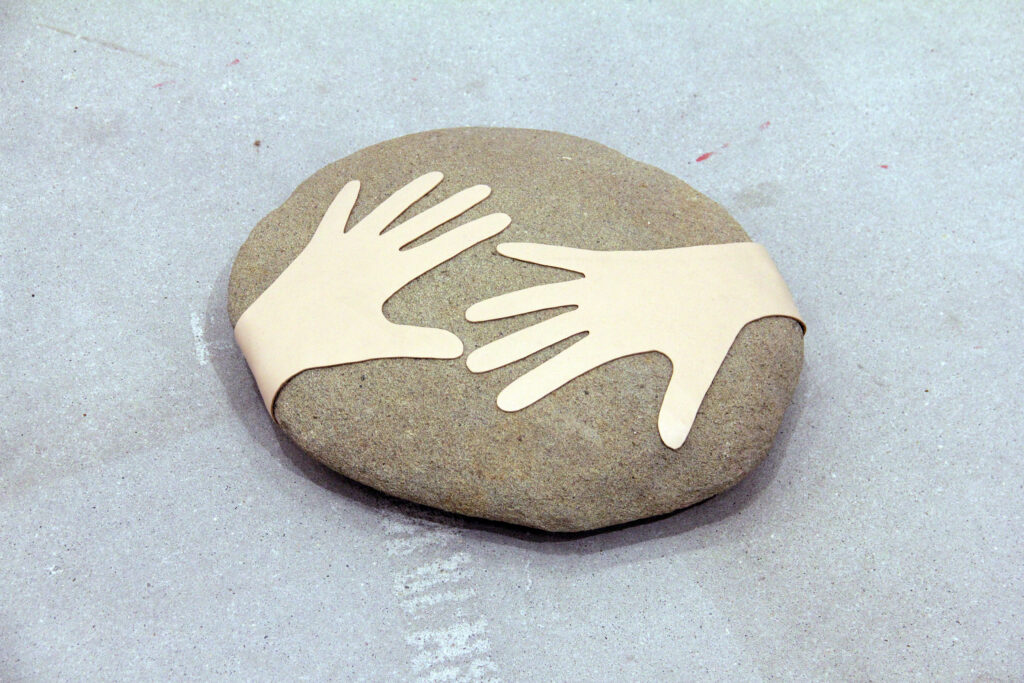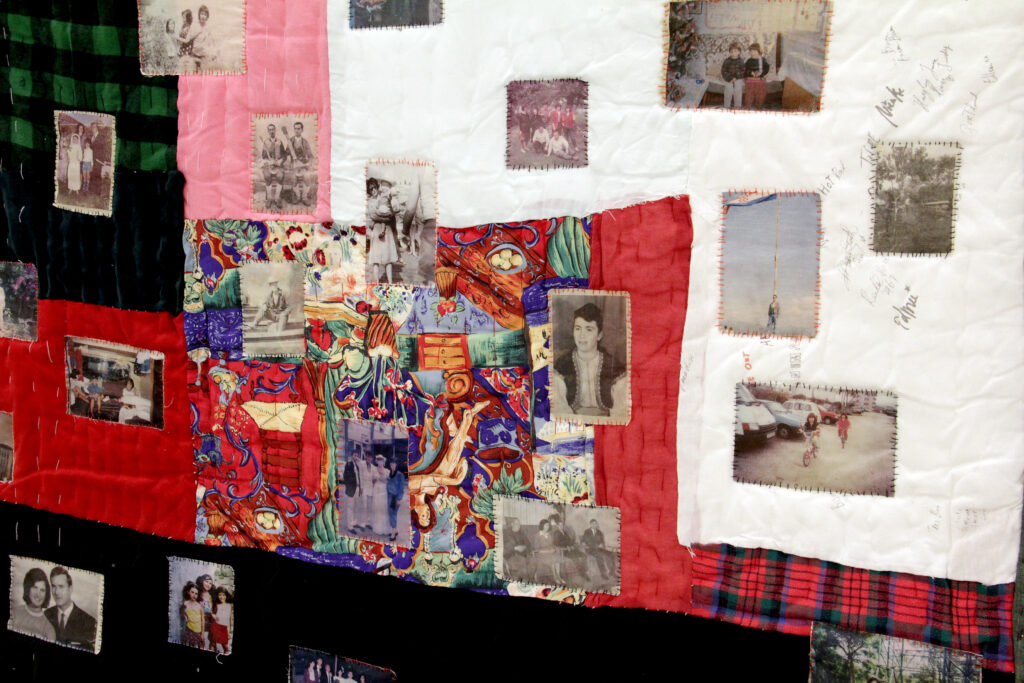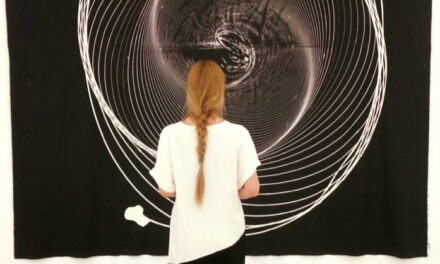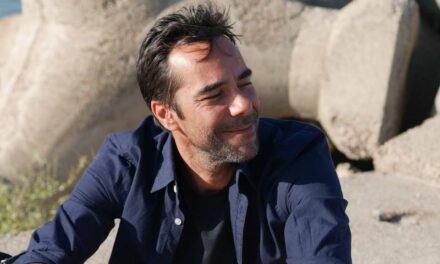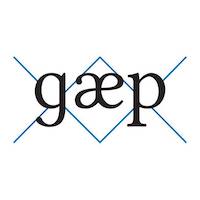This past summer we had a very pleasant experience at the opening of the I constantly wonder what time it is where you are exhibition, hosted by Sector 1 gallery. The show, as charged with poetry as its title, was comprised of a series of works by both iconic Romanian and foreign artists, such as Ion Grigorescu, Alen Ožbolt and a younger generation of female artists (such as Sophie Thun, Diana Tamane, Nona Inescu, Mia Dudek and Glorija Lidze) whose selection of works explore with an uncanny candour the complicated meanderings of what is gained and lost in “human connection”.
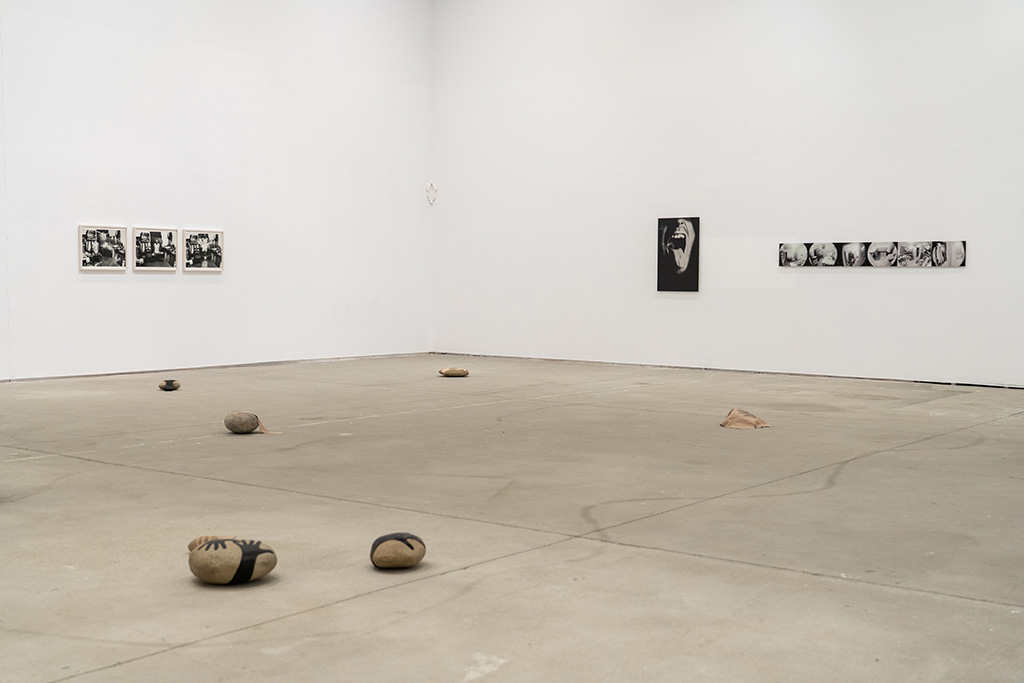
Exhibition view ( courtesy of Sector 1 gallery )
The exhibition’s primary focus was photography, but not only, also objects and installations were on display as media of voicing intimacy. We entered the exhibition softly by stepping on the pillows laid out for us in Alen Ožbolt’s installation Sleepwalker. Third man, to then be greeted by Ion Grigorescu’s bold self portraits The Birth of Romanian Language, Autosuperposition.
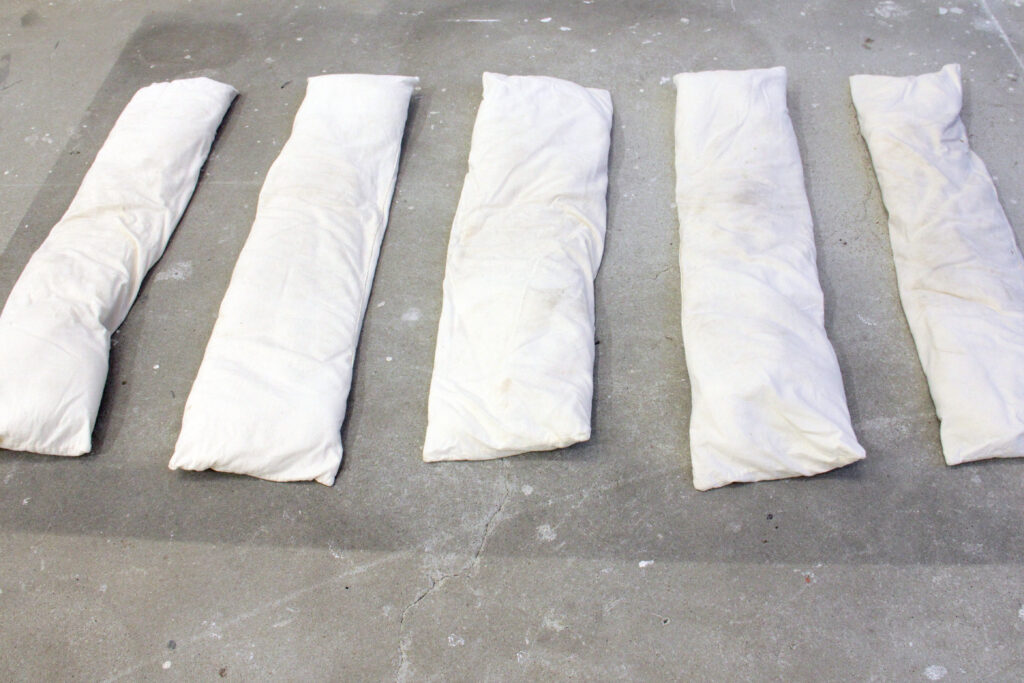
installation Alen Ožbolt – Sleepwalker. The Third Man (Soft Emplacement) – 1996
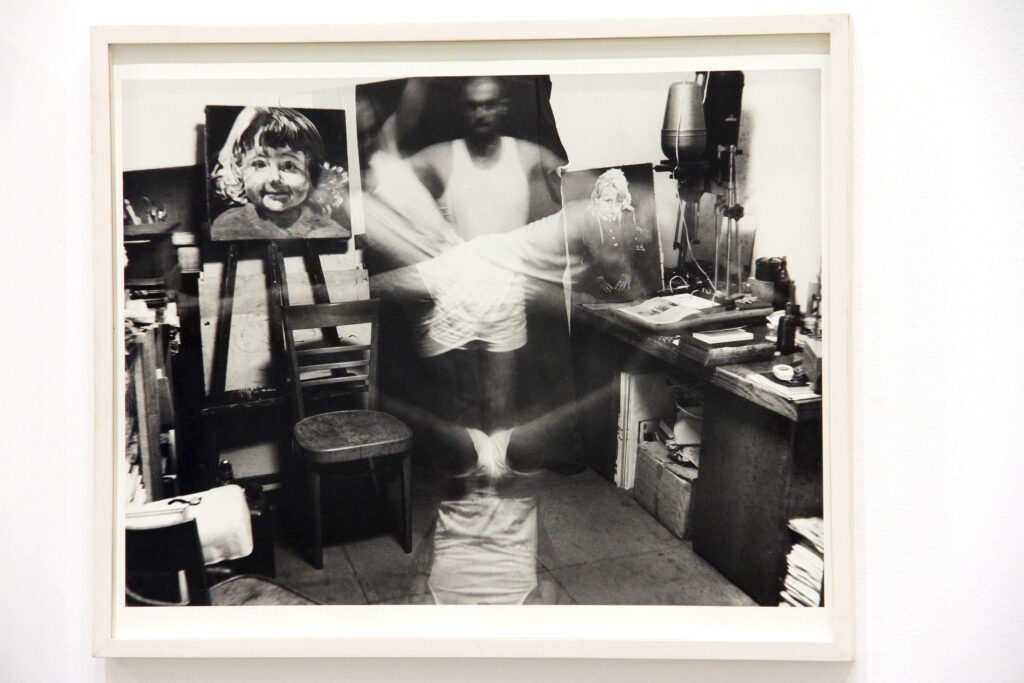
Ion Grigorescu – Autosuperposition -1977
Some artists chose to exhibit retrieved photography, such is the case o Diana Tamane’s moving work Blood Pessure, where she exhibited the blood pressure records her grandmother kept on the back of photos from a family album, all except one, where the grandmother is facing us, with the iconic Eiffel tower in the background.
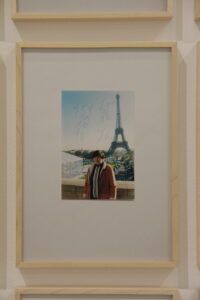
Diana Tamane – Blood Pressure ( detail ) – 2016
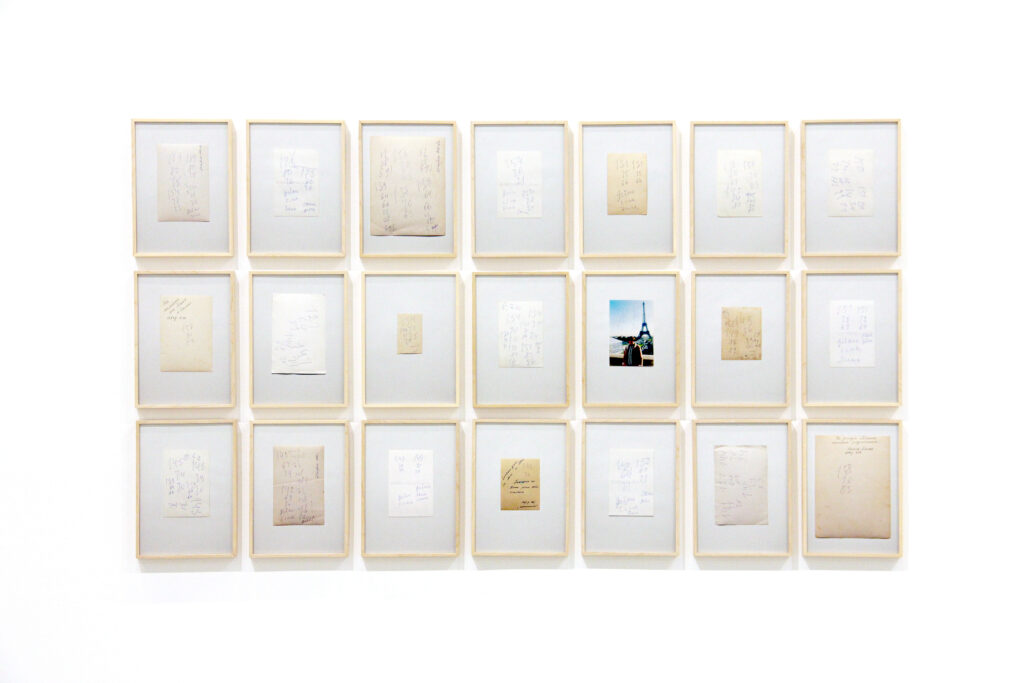
Diana Tamane – Blood Pressure ( installation view ) – 2016
Looking around the exhibition further made us take on a more meditative state, and pay closer attention to our relationship with inanimate objects and the marks we leave on each other.
- Nona Inescu – Skin becomes stone (detail) – 2016
- Glorija Lidze – Family portrait (detail) – 2020
We ended this journey in the artists microhabitat with very delicate and pictorial representation of Fungi in Mia Dudek’s work Fruitting Bodies.

Mia Dudek – Fruiting Bodies – 2020/ 2021
With all that in mind, we decided to dig deeper into this subject together with curator Hana Ostan Ožbolt (who up until last year was director of the ULAY Foundation and currently writes for Artforum magazine in addition to carrying out independent curatorial projects).
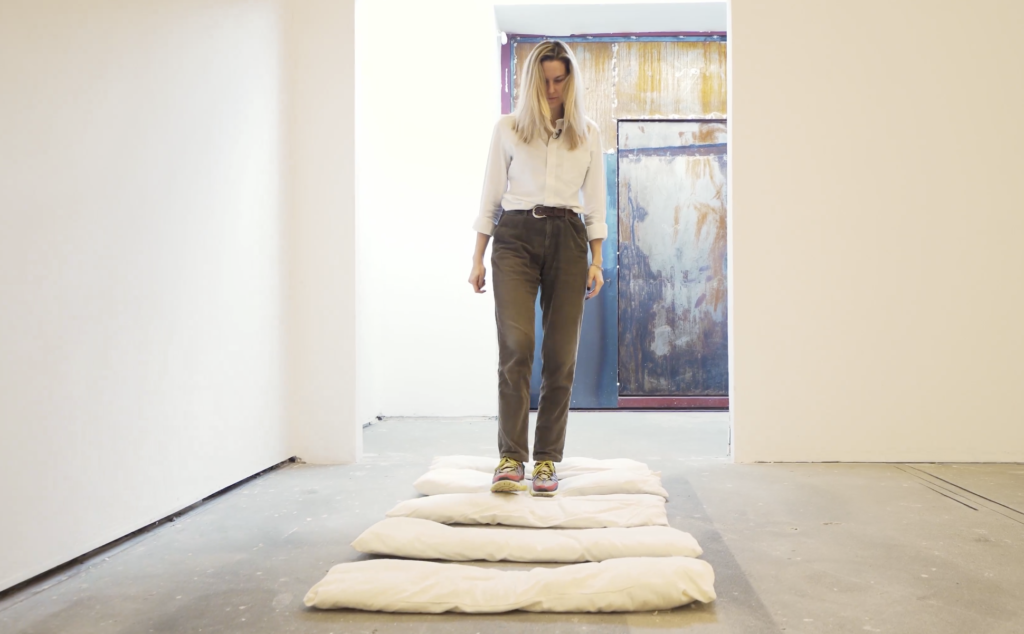
curator Hana Ostan Ožbolt ( courtesy of Sector 1 gallery )
ArTeVezi: What were the guiding ideas for the current exhibition you curated at Sector 1 gallery ?
Hana Ostan Ožbolt: I wanted to do an exhibition tackling the notion of intimacy on various levels. Of being together – or being together apart – of coming closer or departing from each other. „Our health was not good In a particular place I could never use words,” goes a line from a poem by Lisa Robertson, who I also quote in my exhibition text. Intimacy is of all sorts, as are relations – with partners, lovers, family, friends, co-workers, strangers, passersby, animals and more-than-human organisms we share our touch, our existence.
The following exhibition isn’t an apology for intimacy or an excuse to champion it, but rather a modest suggestion that intimacy organises our lives and influences the experience of space. Pressing close is a touchy matter, based as much in fullness and endless bounty as in emptiness and lack—in mutual loss.
Can you tell us more about how you came to this title of the exhibition – “ I constantly wonder what times it is where you are “, could this statement serve as a filter for viewing the works ?
Hana Ostan Ožbolt: Every title, in a way, frames how we perceive an artwork or an exhibition. I personally think titles are important, and I like titles; I like using them. They can offer a direction through which one sees the show, or they can get someone off track, making them wonder in search of connections; this is good. I believe it is essential to keep them semantically open.
The title – “I constantly wonder what times it is where you are“– relates to all the ones we carry in our thoughts. These are not necessarily just our loved ones – family, lovers and friends – but also the people we work with, strangers we encounter daily at the underground station or the people we seem to know from the online world through their social media activity. Or animals, trees; all the non-human organisms who also lead a life on their own. How often do we have all those (people) in our minds?
I have to admit I somehow constantly think about other people. If they are well, if they managed to do their exam or visit their child, if the reason they decided not to call me is my fault…it is a way of caring, I guess, also if solely in my mind…I sometimes ask myself if I obsessively think about other people? And do they also have me in their minds?
Additionally, we live in a social media culture, where exhibiting our lives online makes us constantly busy with the lives of others, creating a sense of schizophrenia, marked by the brief relationships we lead on so many platforms.
Through the prism of the title the show focuses on the measuring of intimate distances. In a way this is also what the selected artists do; delving into and even analysing the environments they belong to. Their relatives or loved ones frequently play a central role in the selected works; within the close surroundings of their lives, the production of artistic practice and the terms and conditions of its existence merge repeatedly. Family albums, documents, everyday objects, or mundane acts are metamorphosed into catalysts, giving meaning to the elements of daily communal existence, uncovering not only personal testimonies but also depictions of society marked by a complex political history. In the engagement with organic and inorganic life, some artists on show step out of the anthropocentric into the vast realms of the more-than-human, rethinking the personal chronicles of materials and various ways of belonging.
If we were to speak in terms of “ contrast ” and “ dialogue “ how would you define this selection of works?
Hana Ostan Ožbolt: Contrast as opposition is part of dialogue – just like similarity and resemblance are. They are a base for every good exhibition.
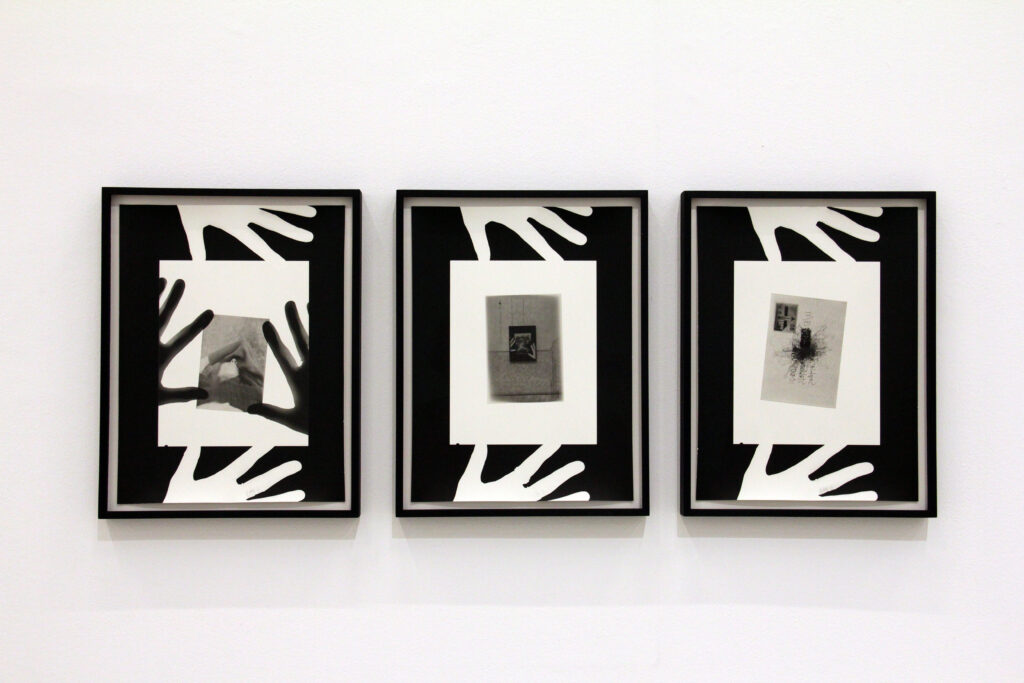
Sophie Thun – All (the) Things in My Apartment Smaller than 8 x 10 inches – 2020

Ion Grigorescu – Around my apartment (Mozart Street) – 1974/2005
What role do you think the historical context played in the way the artists present in this exhibition relate to intimacy ?
Hana Ostan Ožbolt: If you look at the exhibited works of Ion Grigorescu, for example, you can say that the intimate sphere of his apartment played a crucial role in his explorations of his body, in experimenting with his intimacy. This was not possible in the public space – the Ceaușescu regime constricted the possibilities of being in the open.
Or, as I write in the exhibition text: As a young artist, Ion Grigorescu quickly retreated from the public eye. This was not solely due to the political situation (given the Ceaușescu regime) but also because “his conceptual work has an interior focus”. Grigorescu’s performative-photographic works “seem to have the sole purpose of keeping the outside out, to elude to it through a phenomenological act.” In his performative self-mirrorings — on view are The Birth of Romanian Language, 1974; Autosuperposition, 1977; Around My Apartment (Mozart Street), 1974/2005 — Grigorescu “finds an analogy for the inner schizophrenia of a society beset by the suspension of the public and its splintering within a private realm that also has become precarious and unsafe.”
What would be the ideal mindset for viewing this exhibition, or better yet what would be your inside advice for a person that walks into the gallery space ?
Hana Ostan Ožbolt: I believe there is no such thing as an “ideal mindset” for viewing an exhibition. Thinking about the „ideal mindset” can mean putting pressure on the viewer. The mindset in which you enter the space is the right one for that particular moment; it depends on your mood, your time, and even the weather outside. Or maybe, you are just too hungry and actually do not want to even be in the gallery? (Also happens to me.) Exhibitions are living beings – just like us – so I would advise treating them as such. And not to take art viewing too seriously – people seem to fear art, especially contemporary art, as a thing with a big A that they might “not understand”. I think it is more about what you feel.
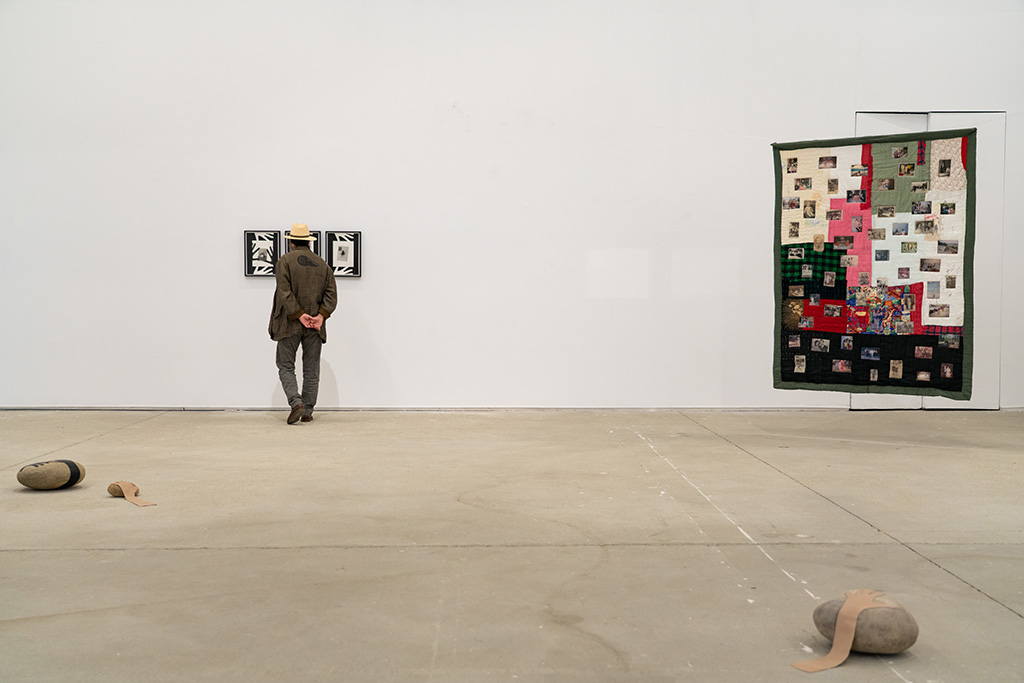
Exhibition view ( courtesy of Sector 1 gallery )
![]()
![]()
And last but not least, how was your stay in Romania and what were your impressions regarding the Bucharest art scene?
Hana Ostan Ožbolt: This was my very first visit to Bucharest, my first time in Romania, an artistic scene that I have not been well familiar with – of course, I follow some of the programmes of the institutions and galleries from Romania and always keep an eye on the Romanian Pavilion in Venice (Venice Biennale). I have also been, since I was an art student, such an admirer of the work of Ion Grigorescu (whose work we had the honour to exhibit as part of the exhibition), Geta Brătescu, Ana Lupaș, Dan Perjovschi, or, if we go a bit back in the past, Constantin Brâncuși, I admire the powerful practices of Alexandra Pirici, Nona Inescu and Andra Ursuța – still, these are just some of the names, the visit offered a broader perspective, which was productive. I also met the people behind the Art Encounters Biennial; I sense and praise the ambition. The scene seems very lively and impressive – the gallery scene especially (what fantastic spaces – what a fantastic space of Sector 1 Gallery!) – I look forward to being back and keeping a dialogue with the Romanian scene!
Autor Oana Bălțatu
